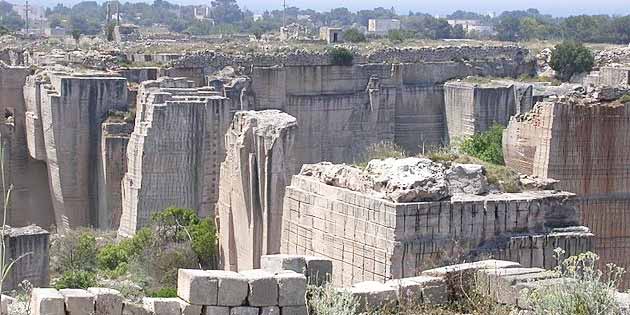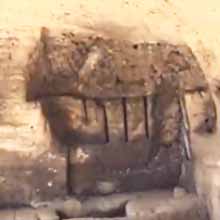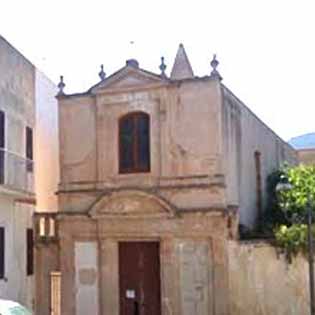Tufo Quarries in Favignana
The Caves of Tufo di Favignana are located in the north-eastern part of the island. This part of the island has a particularly suggestive aspect due to the presence of innumerable quarries, caves, sinks and erosions.
The porous stone extracted from the quarries, the Calcarenite , improperly called tuff, is very valuable both for its compactness and fine grain, and for the white color due to a particular concentration of calcium. The extraction of stone and the production of " cantuna ", ie parallelepiped-shaped limestone blocks, have always represented one of the main activities of the island of Favignana. It is not known exactly when the exploitation of the island's subsoil dates back to, it seems to be an innate activity with Favignana.
The process of extraction of the stone and production of "cantuna" involved three phases.
The first phase consisted in the removal of the cappellaccio, that is the limestone of hard stone, present on the surface, which could reach a thickness of two meters.
The second phase involved the extraction of tuff from blocks which were already perfectly squared and of predetermined dimensions. The tools used for this phase were the "mannara", a sort of wide-cut ice ax that was used to trace and, subsequently, deepen the contours of the stone in the rock; the "zappune" and the "piccune", instruments with which the block was eradicated.
Finally there was the phase of transport of the segments: the rocky tracks outside the quarries show all the heavy furrows left by the wagons, loaded with tuff, which trudged uphill to transport the segments up to small docks where they were loaded on boats sailing.
It often happened that the rock was attached laterally with tunnels from sea level , with the aim of reaching more easily the deeper material which was also the most valuable, also avoiding the removal of the hardest surface layer and facilitating the final phase of transport as the blocks no longer had to be raised to the surface, but only transported to the entrance of the tunnel where there were docks for the boats that took care of the transport. In these quarries, as the ashlars were extracted, the extraction continued at a higher level: notches were dug in the same tuff to cling with hands and feet in order to reach the upper layer. Of course, large pillars were left to support the rocky vaults that were forming. This led to the creation of “pileri” constructions , multi-level tunnel systems. Thus it was that generations of quarrymen spent their days working in the dark, clinging to the rock, and carrying millions of ashlars on their shoulders to boats or wagons, without the aid of other means.
This happened until the quarries began. to be affected by the crisis due to the inability to adapt to changed market conditions. The natural geographical location of the places of extraction gave rise to further economic expenses that did not allow the islanders to have competitive prices compared, for example, to the nearby tuff quarries of Marsala. Thus the quarries began to be closed, today a single quarry with few employees remains active.



